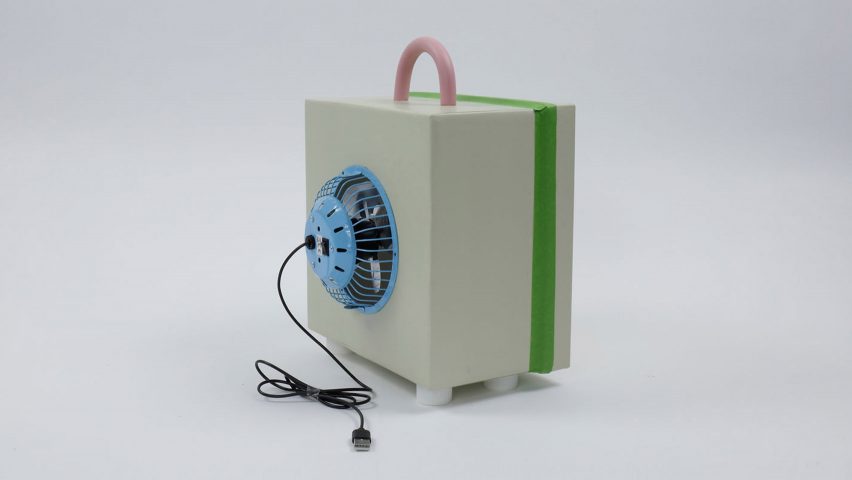
"Everyone from children to the elderly" can build DIY air purifier
Jihee Moon of South Korean design studio Newtab-22 has developed an open-source IKEA-style manual with instructions on how to build the Air-It-Yourself air purifier in under an hour using everyday items.
The Air-It-Yourself system uses household waste from shoe boxes to plastic plant pots for parts and combines them with a small USB fan and a HEPA filter sheet, which can be bought cheaply and easily on the internet.
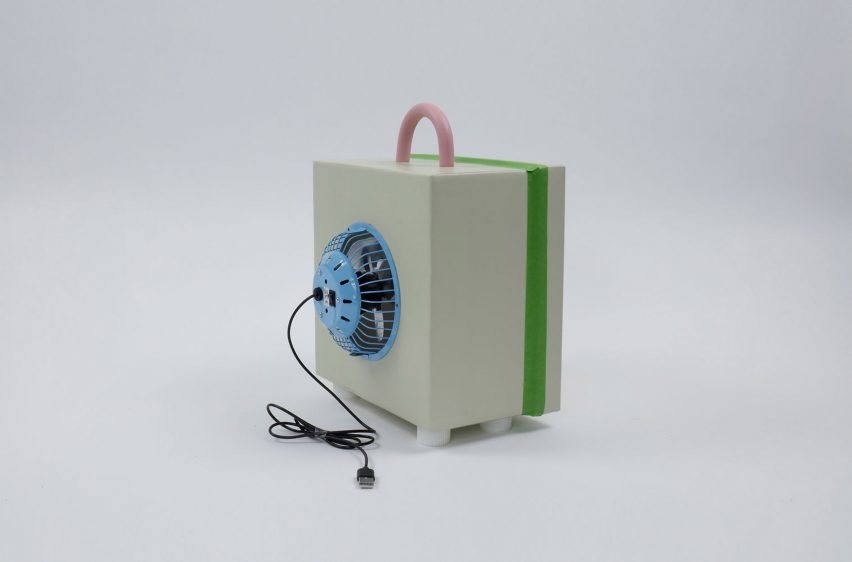
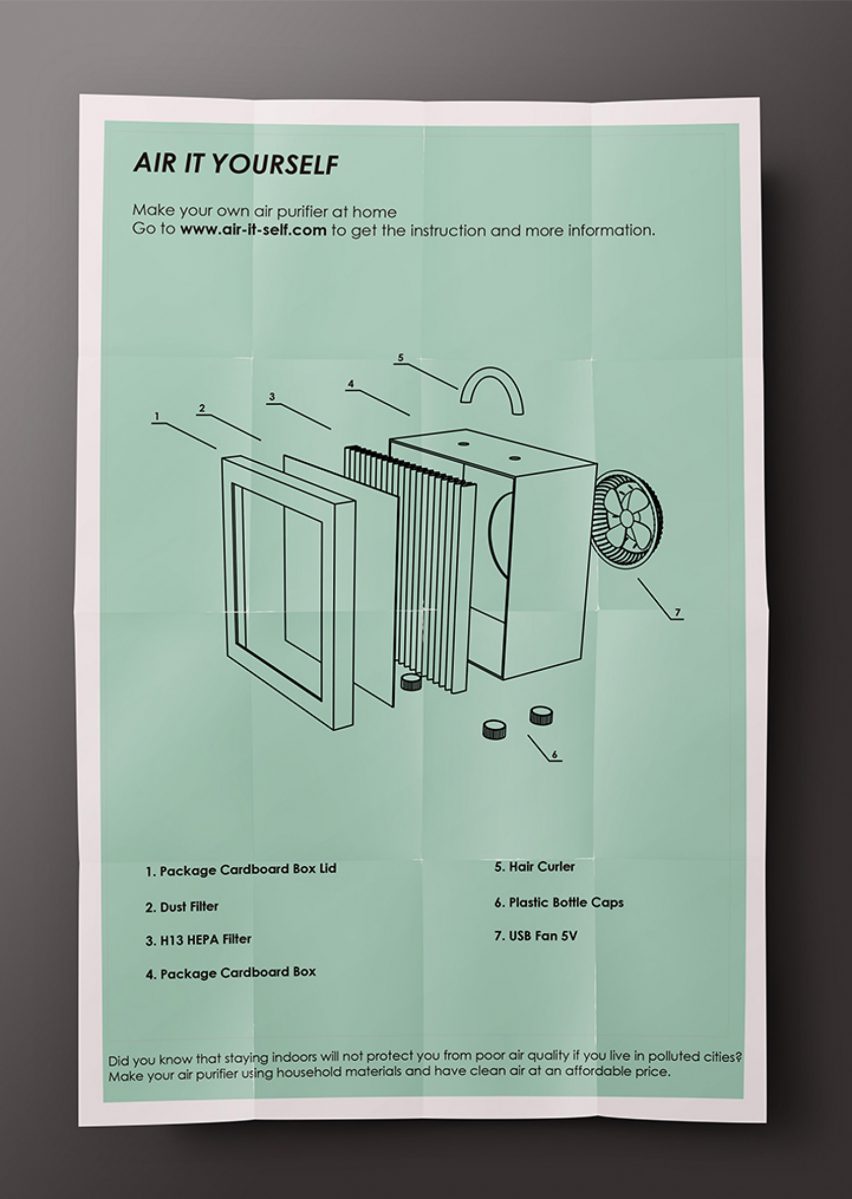
By demonstrating how air purifiers could be made using items that people already have at home, Moon hopes to offer an alternative to traditional high-tech purifiers that often come at a high cost.
"While air purifiers are usually expensive, the functioning structure of the product is not complicated," she told Dezeen. "If you have a filter and a fan and have access to the instructional guide that I have developed, everyone can make similar products with ease."
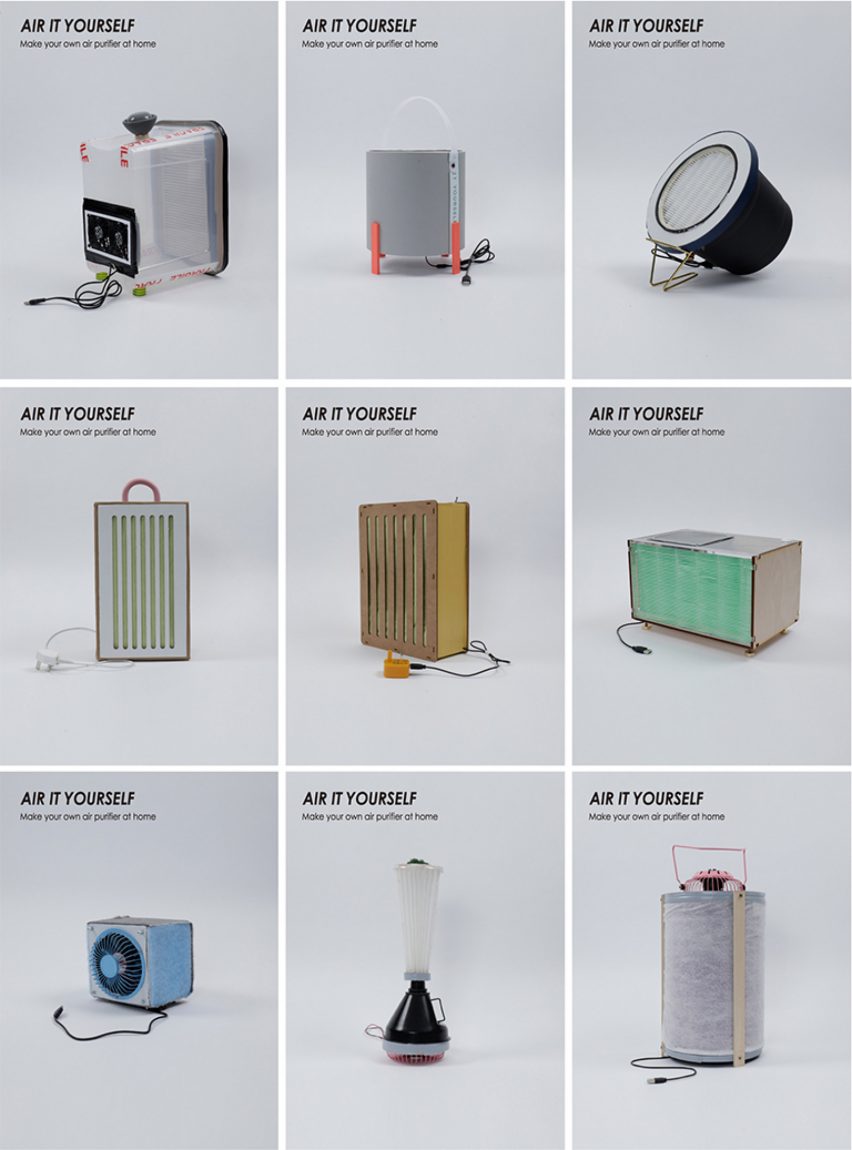
Air pollution, both indoors and outdoors, caused 6.7 million premature deaths in 2019 – a risk that disproportionately affects poorer countries and households.
By empowering these communities to make their own low-tech purifier, Moon hopes to democratise access to clean air and establish it as both a public resource and a human right.
"Air pollution widens the inequality between rich and poor," Moon said. "In the long-term, governments and individuals should make lasting changes to improve global air quality. However, until then, self-protection is a priority."
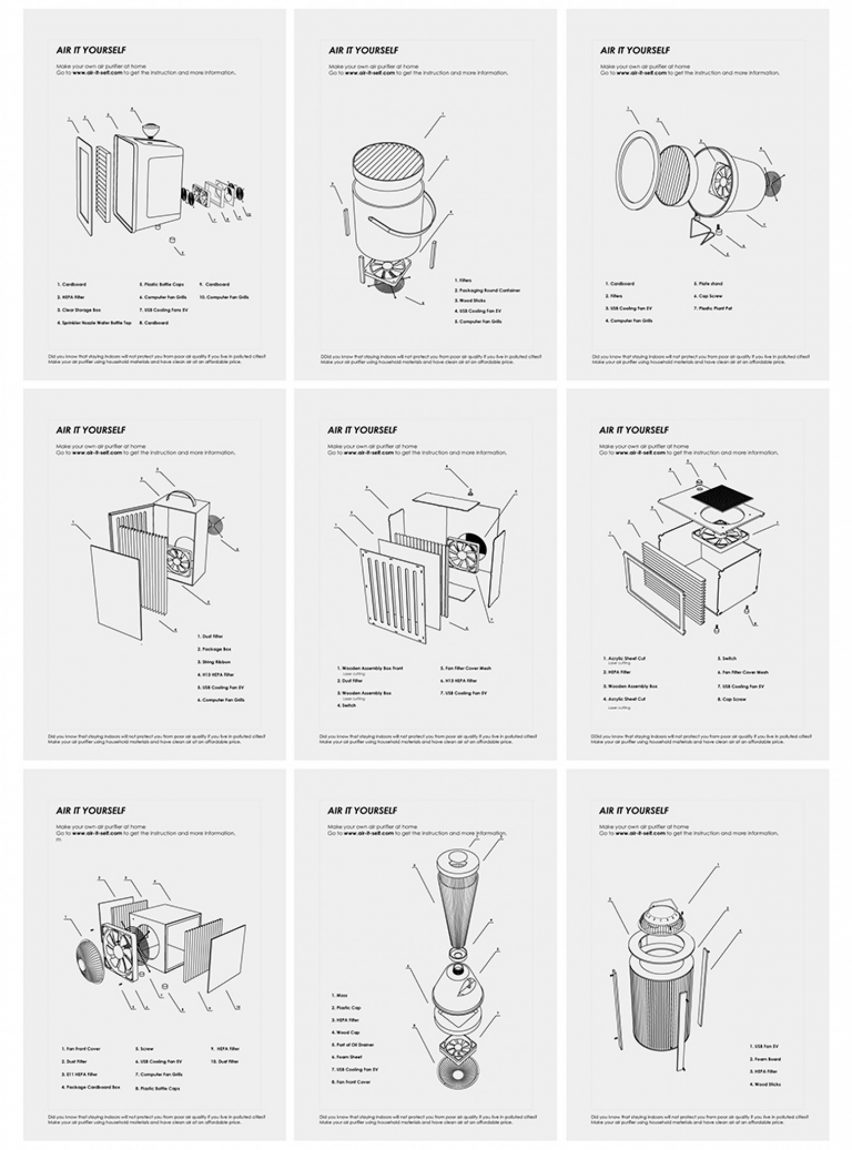
Moon has constructed various prototypes using the Air-It-Yourself system, each making use of different household items but constructed using the same logic.
A large, hollow item such as a shoe box, oil funnel or a plastic plant pot is used to form the body, with holes on either end used to accommodate the fan on one side and the HEPA filter on the other.
The contraption is sealed shut using glue and tape to prevent leakage and ensure all air that is sucked in by the fan is pushed out through the filter.
Additional elements can be added for practicality, with bottle caps used as feet to raise the air purifier off the ground and hair curlers acting as handles so it can be carried from room to room.
The instructions were designed and adapted based on interviews and workshops with residents in Seoul, where particle pollution levels are about twice as high as in any other major city in a developed country.
The result is a product that "everyone from children to the elderly can make easily, taking less than an hour to make at an affordable price", Moon explained.
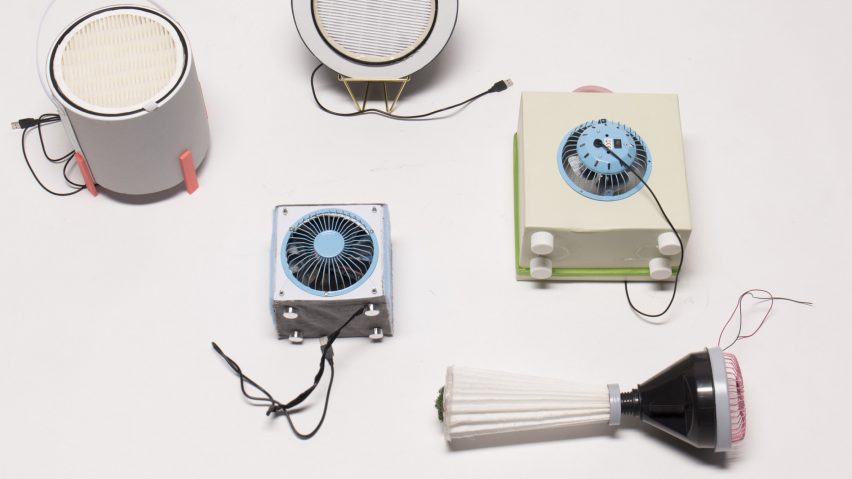
Despite its DIY construction, the purifier was able to improve indoor particle pollution from a "very unhealthy" air quality index (AQI) level of 304 to a healthy level of three in only two minutes when Moon trialled the design.
As the design leaves the filter visible from the outside, it also forces users to engage actively with the air quality in their homes.
"Users can see the pollution of the filter with their eyes," she explained. "That means they can know the changing day of the filter directly."
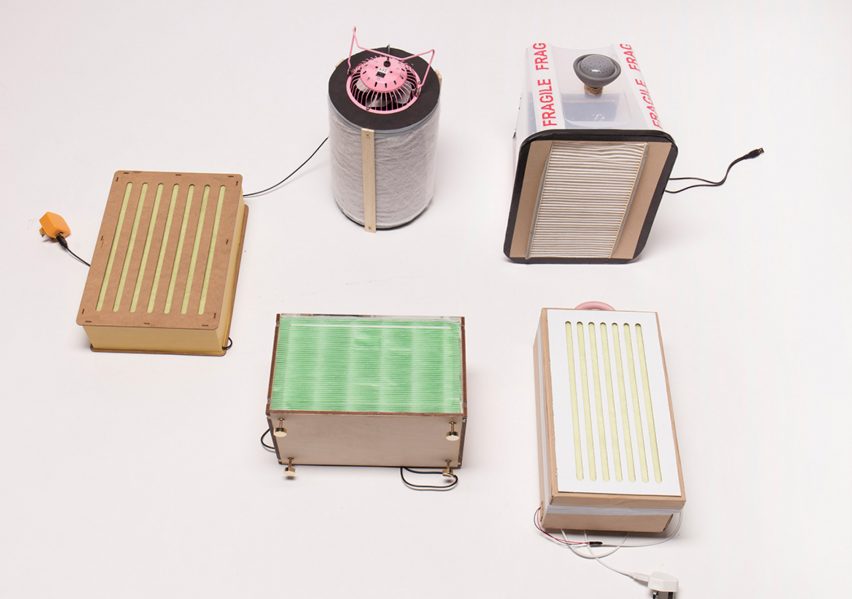
In the future, the designer hopes to create an entire open-source platform, where users can share their own adaptations of the designs based on the resources available to them.
Air-It-Yourself has recently been shortlisted in the sustainable design category of the 2022 Dezeen Awards.
Here, the project is up against another open-source gadget – a food processor that works with household jars – alongside a brick made from recycled construction waste and an outdoor furniture collection made from waste firehose.